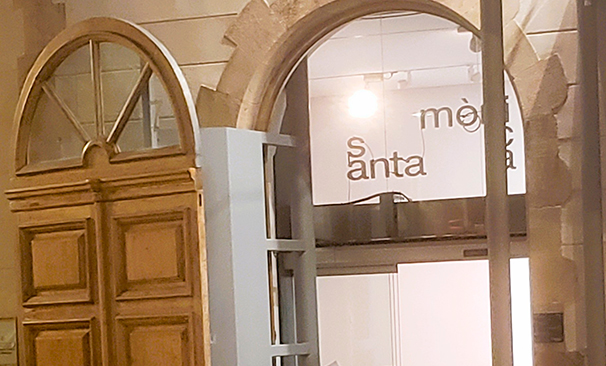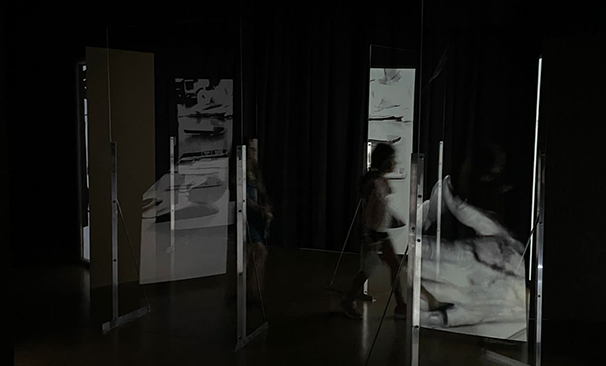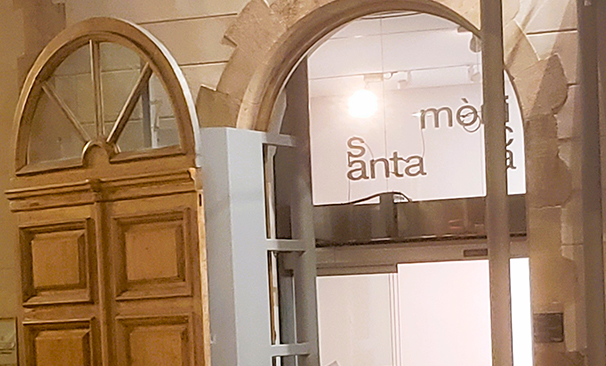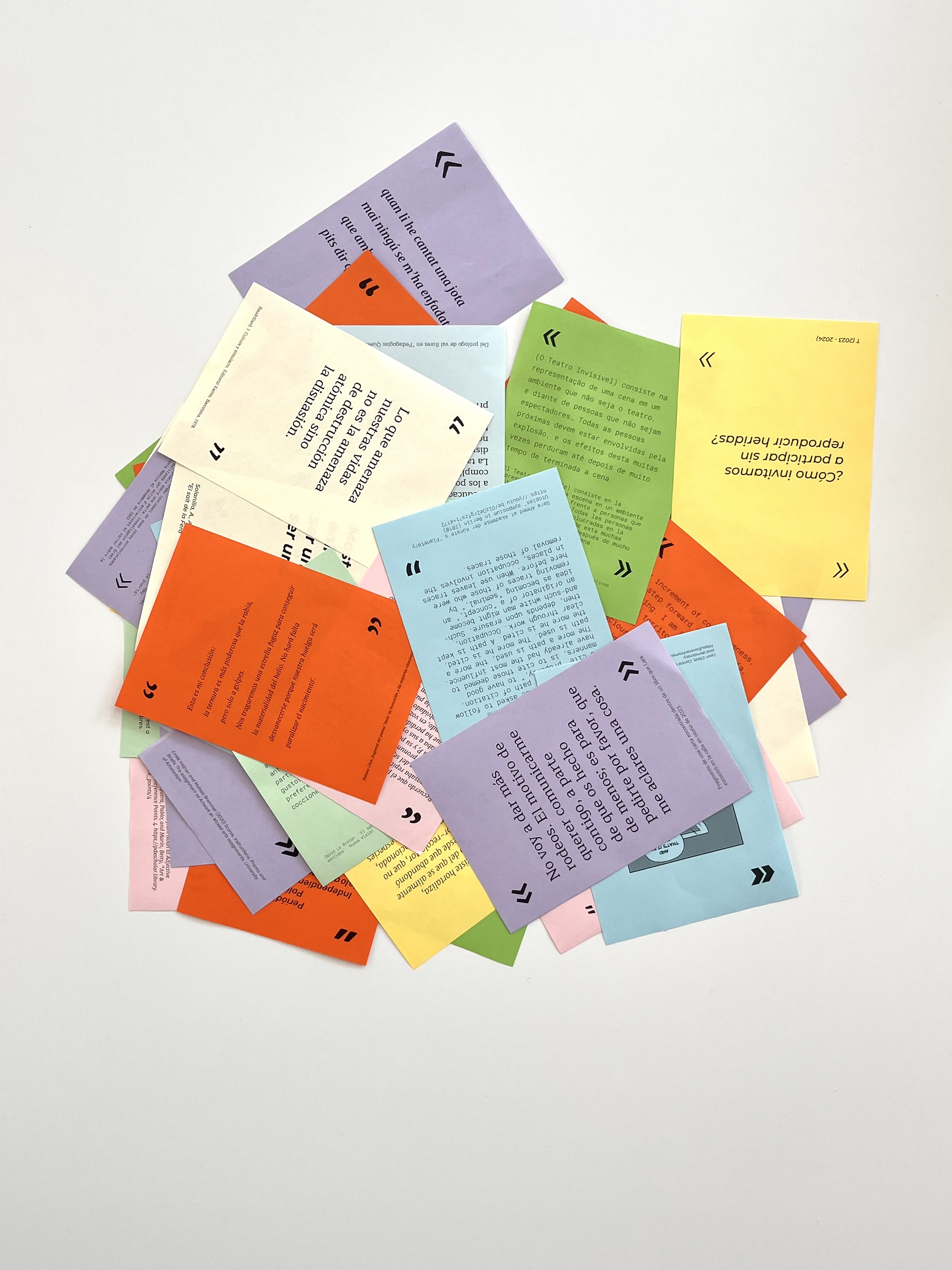What are you looking for?
You might be looking for...
Estudis sobre una porta
A sound installation to explore thresholds as spaces of symbolic, relational and artistic activation
Abstract
Estudis sobre una porta is a prototype sound installation that presents a selection of visitors' opinions on the form and perception of the centre's entrance door. With the activation of these recorded interviews, the proposal invites us to reflect on the threshold between inside and outside, both in a physical and symbolic sense, and focuses on the spaces and moments of transition between exhibitions, in order to reclaim them as essential parts of the artistic experience and the functioning of the centre.

The proposal is part of the project Observacions situades, a series of experiments promoted by the Spaces Guild 22-23 (Pedro Bennaton and Anna Solanilla) that used ethnographic, invisibility and observation methodologies to collect people's spontaneous perceptions, as well as their feelings and experiences in regard to the space. These observational exercises are based on the work initiated by Pedro Bennaton in 2007, developed within the framework of his academic thesis Teatre de situacions (2020), and which he has continued to expand through new experiences as a resident at the centre.
This prototype presents a selection of interviews conducted on several occasions by actors with the public of the centre, recorded with the aim of exploring the meaning and potential of the threshold (the door) as a space of symbolic, relational and artistic activation.
BACKGROUND
- A device for recording observations.
- Software that allows the layout of these observations.
- Printing services.
- Loudspeakers, cabling and a computer for the sound installation.
INGREDIENTS
1. Establish a working team and agree on the main focus of the study: what facts you want to observe, what dynamics you want to analyse, etc.
2. Choose or temporarily plan the events that will be used for data collection: exhibitions, programmed activities, etc.
3. Write a script of the interviews you want to conduct.
4. Contact actors who specialise in invisible theatre and carry out the necessary rehearsals.
5. Set up meetings with the venue team to explain the project and your needs.
6. Publicise the events.
7. Conduct data collection on the agreed days and record all interviews and actions.
8. Review all the material and select the most representative.
9. Design the sound installation and edit the selected material.
10. On the agreed day(s), activate the installation.
11. Optionally, the materials can be used for dramatisation at a later stage.
STEPS
Materialisations
Spaces Guild Prototype 23-24
Pedro Bennaton, Cristina Candela and Anna Solanilla
* This recipe is based on documentation of the entire process. For more details, contact us at santamonica@gencat.cat.



